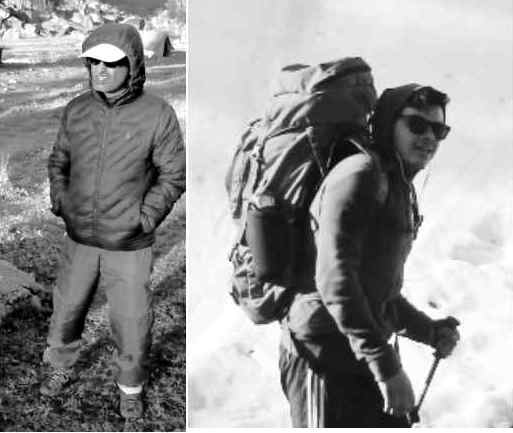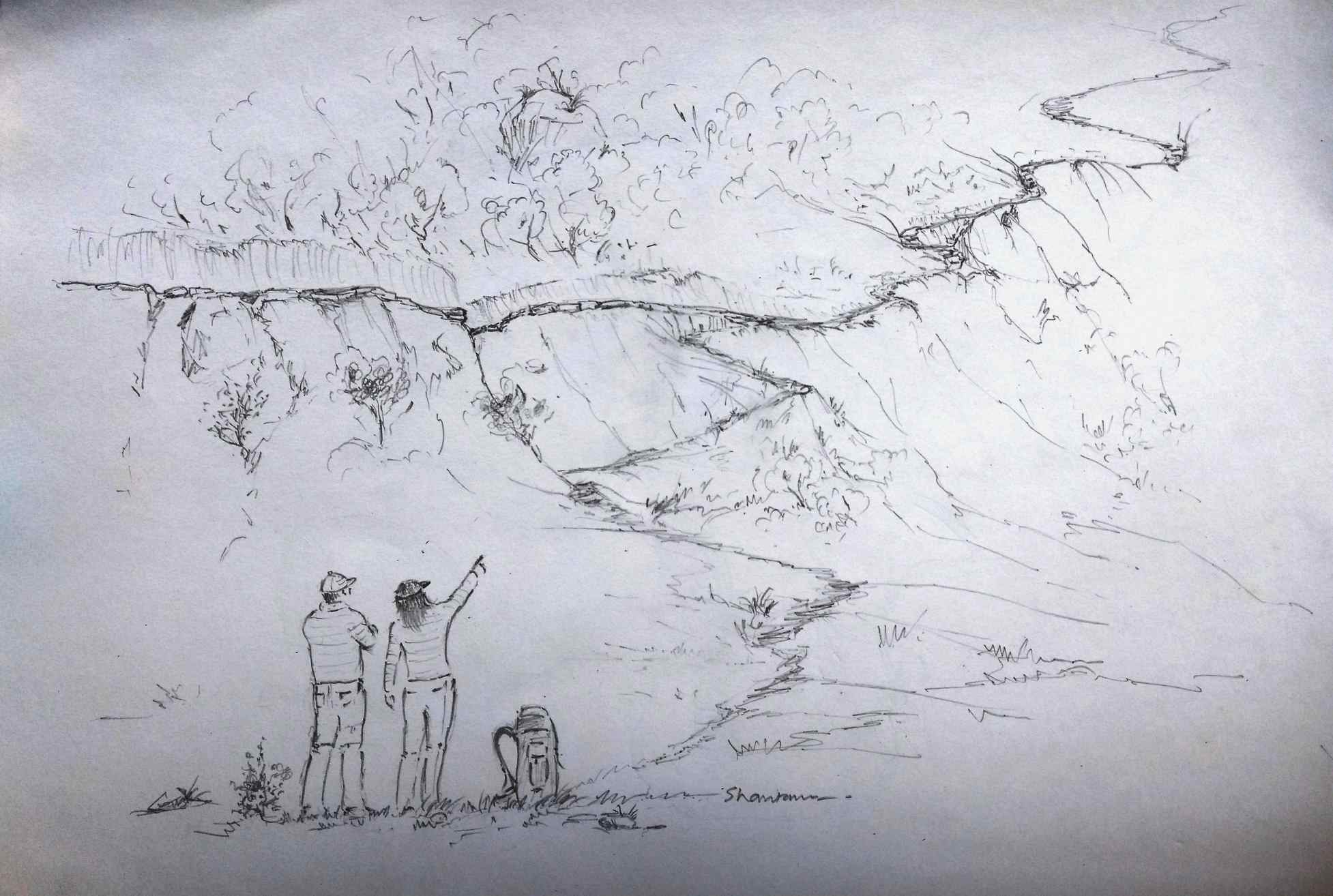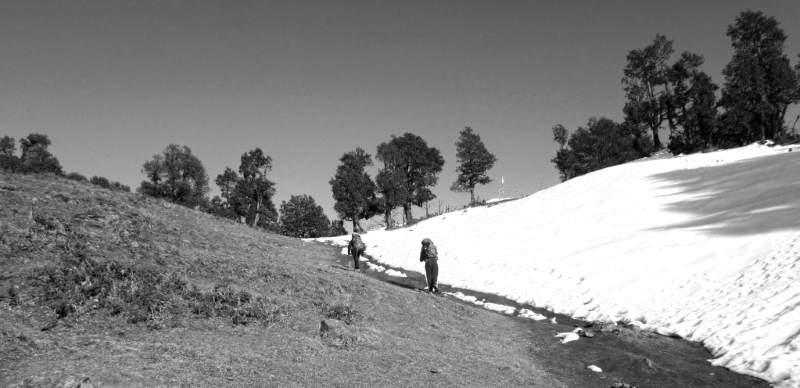You are about to leave camp at around 10,000 ft. The sun has not hit your camp yet, your location being just west of a steep slope that rises up to a high ridge beyond which you see that there is a sun shining warmly (sigh!). There is a light breeze that creates significant wind chill. But you have been comfortably warm since getting up that morning: you have wisely put on multiple layers – your hiking T-shirt as base layer, a fleece jacket as mid-layer and a wind-shirt (wind-cheater) as the outer layer. You have packed away your thermal inners which you were wearing since last evening.

Scenario-1: concept of de-layering
You haul up your rucksack and start walking. Soon, you feel a bit of discomfort as you start perspiring imperceptibly, and you remove the wind-shirt, which immediately makes you feel better despite the light wind. In less than half an hour, having begun toiling up a steep incline, you realise that the fleece jacket is too warm and it comes off, and you keep on walking without any unease. You continue hiking in your base layer for the rest of the day which is alternately sunny and cloudy, a fairly normal day in the Himalaya. This progressive de-layering is much more effective and convenient than having had a single thick layer on to begin with.
Scenario-2: concept of ‘starting cold’!
Before you haul up your rucksack to start walking, you have a talk with your group leader about the immediate way ahead. She points out the path that snakes up from your camp to join the main trail, which contours around for a bit before crawling up a steep incline in picturesque switchbacks. Both of you estimate that your group will hit the base of those switchbacks in about twenty minutes. You decide to ‘start cold’! You wait till everyone is ready, quickly take off your mid and outer layers and pack them away. As you start walking, you give a theatrical shiver as the breeze raises goose bumps on your skin. When others who have their multiple layers on take short halts to successively divest themselves of their layers, you get a chance to take photographs, observe some early morning birds testing the famous luck of early birds or just plod on at your slower pace. You continue hiking in your base layer for the rest of the day which is alternately sunny and cloudy, a fairly normal day in the Himalaya. ‘Starting cold’ works!

Another type of scenario, same day
It has been about an hour since you left camp. That steep incline of picturesque switchbacks had been rough but deeply satisfying as you had successfully met the goal you had set for yourself: set up a slow, slow plodding pace and walk up all the switchbacks without a break! After that the trail had been typical, ups and downs with gradual gain in elevation. After about an hour, the group leader calls for a ten-minute halt and drops her rucksack in a small meadow just off the trail. Many group members are happy – there are rucksacks to be adjusted, shoelaces to be fiddled with, snacks to be munched and water to be drunk. As you sit down on a rock and grab your chikki, a light breeze picks up and makes you shiver. You access your wind-shirt kept in the top pouch of your rucksack and put it on. The wind-shirt now has not only blocked the wind but also trapped your body heat from escaping. You realise that this is much better than putting on one thick layer which would have made you uncomfortably warm, and unnecessarily so. You also know that for a longer halt you will probably have to put on your fleece jacket which you have stored right at the top inside the rucksack. When someone alerts the group that people have two more minutes before the ten minute halt ends, you remove your wind-shirt and store it away. Ditto the chikki packet and you are ready to start walking.


I can not even begin to tell you how critical this blog is for my 2,2000 mile Appalachian traverse next year. Huge thanks.
Hey Thanks, Nitin!
Very nicely explained
Thanks Shantanu
Thank you Deepali!